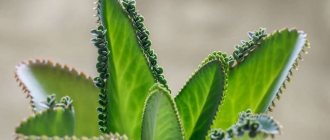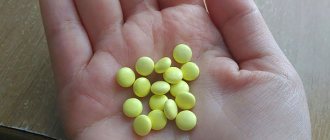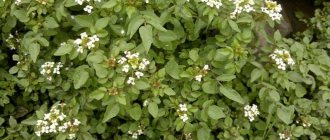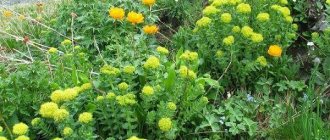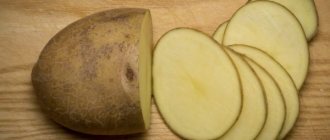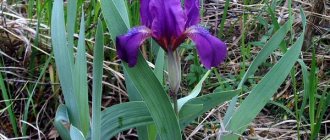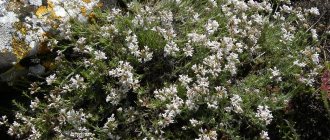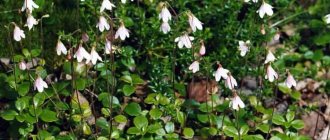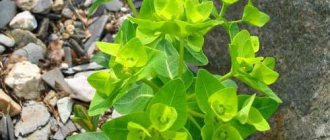One of the most common plants is spring wildflower. It has found wide application in herbal medicine due to its unique chemical composition. It will be useful for anyone who wants to learn about pineapple, the medicinal properties and contraindications for the use of this wild plant, as well as the most popular recipes with this phytocomponent, to read this article.
What is whining?
The common weed, the medicinal properties of which have made it so popular among herbalists, is for many gardeners nothing more than a weed. This is a perennial herbaceous plant representing the extensive Apiaceae family.
Dreamweed has one straight stem, its upper leaves are small and have short petioles, and the lower leaves are larger, ovoid in shape and have jagged edges. This wild plant blooms with small white flowers, collected in bunches - umbrellas. The flowering period of the honeydew is June and July; the seeds ripen in August.
In Latin, the goat's name is "Aegopodium podagraria", which translates as "goat's foot". This nickname was given to the grass by Carl Linnaeus, since its leaves looked like a goat's hoof print. The term “snyt” is probably a derivative of the Old Russian word “sned”, which means food. The benefits and nutritional properties of this wild plant have been known since ancient times. The Monk Seraphim of Sarov fed on it, and for three years he led a hermit’s life in the forest. He said that he only ate what he prepared for himself from this plant.
The herb can be added to boiled or stewed, as well as fried dishes, made into salads, and brewed teas from it. It is also good in green smoothies, which are especially positively perceived by the body due to the grinding of phytocomponents.
Spreading
In the European zone of Russia, as well as in the East, the squirrel is found everywhere. The territory of Transcaucasia, Southern Siberia, Central Asia - the squirrel is densely and widely distributed. The European continent is inhabited by grass from Norway to the territory of Corsica.
Oriental goat's rue - honey plant, what is useful, how to grow
Thickets of the plant can form among deciduous and coniferous trees, on the edges of forests and among log houses. It also grows among bushes, in ravines, and parks. An important condition is fertile, well-moistened soil, which can be either chernozem or with admixtures of clay. Common borer can infest gardens and vegetable plots.
The plant loves light, but normally tolerates the dense shadow formed among deciduous trees and bushes in the summer. Often, a plant such as common borer is adjacent to fern, sorrel, and oxalis.
Varieties and chemical composition of honeydew
There are several subspecies of this plant, among them the most popular are the Kashmiri wart, the common wart and the variegated wart, also called decorative. In food and medicinal terms, the first type of herbaceous wild plant is used.
Honeycomb is one of the best honey plants, it contains a lot of fiber and pectin, and contains a whole complex of vitamins: A, C, B, as well as iron, manganese and copper.
The above-ground part of the wild plant is rich in the flavonoids quercetin and kaempferol. Dreamweed contains umbelliferose and glucose with fructose, cyclitols such as scylite and glucinol. The plant contains lectins and coumarins umbelliferone, as well as bergapten xanthotoxin. There are nitrogen-containing compounds in small quantities, in particular choline. Of the amino acids contained in honey, arginine deserves special attention. It is curious that scientists have discovered similarities in the chemical composition of the dream with the composition of human blood. This fact speaks better than others about the usefulness of this plant.
Chemical composition
The nutritional value of the plant is 13 kcal per 100 g. It contains proteins (1.6 g), carbohydrates (2.3 g) and dietary fiber (1.4 g). Therefore, if necessary (for example, in extreme conditions), it will be possible to get enough of a grass salad.
Medicinal properties of Snyti
In general, the chemical composition of honeydew has been little studied to this day.
But it is reliably known that it contains the following substances in large quantities:
- beta-carotene;
- vitamins A and C;
- iron;
- manganese;
- copper;
- potassium.
At the same time, there is a very high content of all of the listed substances, except potassium. So, just 100 g of the plant contains 200% of a person’s daily requirement for copper and 150% of vitamin C. That is why it is so useful to at least occasionally add fresh herbs to your diet.
Medicinal properties of dream
Dryweed has a considerable list of medicinal properties, in particular, it has:
- anti-inflammatory;
- restorative (due to the content of vitamin C and flavonoids);
- immunomodulatory (due to ascorbic acid);
- diuretic and choleretic (thanks to the flavonoids quercetin and kaempferol);
- antiallergic (coumarins contribute to this);
- fungicidal and antibacterial (thanks to carotene and bioflavonoids);
- lowers blood pressure (due to the presence of flavonoids).
It is believed that it relaxes muscles and promotes rapid restoration of muscle fibers, and also stimulates hair growth. The latter allowed the plant to be used for cosmetic purposes. In ancient times, this remedy was used to treat scurvy.
We invite you to watch a video in which herbalist, naturopath Natalia Yurievna Efimenko talks about sap, medicinal properties and contraindications, advises eating the plant fresh, she notes its high vitamin benefits:
Indications for the use of sedum for medicinal purposes
The herbaceous wild plant has an extensive list of indications for use. The following diseases and pathologies are treated with medicines based on it:
- urolithiasis, gallstones - internal intake of a water infusion from fresh herbs;
- liver diseases (hepatoprotective function) - taking a decoction of the herb;
- analgesic and anti-inflammatory - internal use of dream decoction in a water bath;
- joint diseases (inflammation after injuries, gout, arthritis, arthrosis) - compresses from fresh grass pulp;
- skin rashes (in particular, eczema and allergic dermatitis) - an aqueous infusion of the dream is used for compresses;
- to thin the blood and neutralize blood clots, as well as to lower the level of cholesterol in the blood - internal use of an aqueous infusion of the roots of the dream;
- treatment of diseases of the oral cavity , getting rid of unpleasant odor, strengthening the gums - rinsing the mouth with a decoction of soda;
- immunomodulatory effect – consumption of the plant fresh. Typically found in green smoothies or salads;
- relaxation and a slight calming effect - baths from the infusion of dream;
- for rheumatism and neuralgia - compresses from dream oil;
- When losing weight and to remove toxins from the body, a fresh plant is used. 100 grams of grass contain 12.7 kcal;
- for the treatment of colds and flu - internal administration of a decoction of dream;
It is impossible to be treated for a long time with phyto-remedies based on dream, this can cause intoxication of the body.
For domestic purposes, dream has been used since ancient times to dye fabrics yellow. The plant was actively used in cooking, adding to first and second courses and side dishes.
Contraindications to the use of wild plants
This phytocomponent has been pharmacologically studied quite well, so its contraindications are precisely known. As a rule, it is well tolerated by the body, but those who are prone to allergies need to conduct a test before consuming this component in food or in the form of medicine. If any pathological symptoms appear, you should stop treatment and take an antihistamine.
If a person takes pharmacological drugs, they can be supplemented with herbal remedies from the dream only with the permission of a doctor.
Pregnant women and young mothers during lactation need to be extremely careful when using sedative medications internally.
Folk recipes: how to use honey
Decoctions, infusions and tinctures are made from sap Salads made from honeydew and green smoothies made from this phytocomponent are especially useful.
Recipes for many herbal remedies are quite simple and accessible.
Infusion of dream
You need to pour 20-30 grams of fresh, washed and chopped greens with 1 cup of boiling water, leave for 1 hour, then strain. The drug is taken 4 times a day, 50 grams, the medicine helps with kidney and bladder diseases.
Dream decoction
To prepare the medicine, boil 250 grams of water, then add 2 tablespoons of fresh or dried, crushed plants (leaves and stems), boil everything for a third of an hour, after which you need to let the broth cool to room temperature. The liquid is filtered and such an amount of boiled water is poured into it so that the volume of the product again becomes 250 grams. Divide the dose into 5 doses of 50 grams, drink daily for 2 months. The drug has a hepatoprotective effect, and also has an anti-inflammatory and mild analgesic effect.
Infusion of plant roots
The herbal medicine is prepared as follows: you need to pour the crushed roots of the plant into a liter jar so that the container is one third full. Next, everything is filled up to the neck with alcohol or high-quality vodka, closed tightly, shaken and infused in a dark, cool place for 2 weeks. It is advisable to shake the container periodically. After the preparation time has expired, the liquid is filtered and taken 25 drops (diluted in water) half an hour before meals, 3 times a day. This medicinal component helps improve the functioning of the digestive tract.
Water decoction of roots
To prepare an aqueous decoction of the roots of the plant, you need to take 7 grams of crushed phytocomponent, pour 225 grams of boiling water over it and simmer over low heat. After 20 minutes, everything is removed from the heat and infused for 6 hours. The liquid is then filtered and drunk in small portions throughout the day. The product helps lower blood cholesterol levels.
Infusion for external use
To prepare an infusion intended for external use, you need to pour 20 grams of dry or fresh herbs into 1 cup of boiling water and leave until cool, then filter and use for rinsing the mouth, or for compresses for diathesis, allergic dermatitis, ulcers and other skin diseases.
Read also: How to create herbal infusions with the properties you need Herbal healing is probably as old as humanity itself. Since ancient times, people have learned...
Preparation of medicines
In folk medicine, there are different recipes for preparing medicinal preparations from the common dream at home. Here are the most common ones.
Tincture of rhizomes
Peculiarities. Indications for the use of this tincture are diseases of the gastrointestinal tract, including benign and malignant neoplasms.
Preparation and use
- The collected, washed rhizomes are twisted in a meat grinder or chopped with a knife. Fill a 1 liter jar with them by one third.
- Fill the rhizomes with pure vodka until the jar is full, and cover with a nylon lid.
- The mixture is placed in a dark place for two weeks.
- After this time, the resulting tincture is filtered, squeezing out the cake.
- Take 25 drops orally, three times a day. About half an hour before meals.
- A couple of tablespoons of chopped herbs are poured into a glass of boiling water.
- The herb must be brewed in a water bath for 15 minutes.
- After this, the infusion of dream is wrapped and left until it cools completely.
- The resulting infusion is filtered and brought to a volume of 200 ml with boiled water.
- Take up to five times a day, in equal portions, for two months.
- A tablespoon of roots is poured into a glass of boiling water.
- Bring to a boil over low heat, simmer for 20 minutes.
- After infusing for six hours, the resulting product is filtered.
- Drink in equal portions throughout the day.
- Chopped dry grass or mashed fresh grass is placed in a piece of gauze folded in half and tied loosely in a bag.
- Place the bag of herbs in a container of boiling water for five minutes.
- Take out the compress, cool it to body temperature, level the grass in the bag to obtain a compress corresponding to the size of the damage.
- Apply a poultice for half an hour after antiseptic treatment of the wound.
- Fresh washed rhizomes weighing 40 g are cut into small strips with a knife.
- Pour a liter of boiling water over the roots, heat over low heat for 15 minutes, leave for half an hour.
- After filtering, the broth is added to a bath of water at body temperature.
- Water procedures are carried out for 15-20 minutes.
Universal infusion
Peculiarities. The product is suitable for the treatment of joint diseases - gout, arthritis, arthrosis, osteochondrosis. They treat kidney disorders, digestive disorders, diathesis, eczema, and also drink to cleanse the liver.
Preparation and use
Infusion of roots
Peculiarities. Used for the treatment of thrombosis, atherosclerosis, and hematopoietic disorders.
Preparation and use
Compresses
Peculiarities. They are used to heal wounds, bedsores, erysipelas, as well as to eliminate pain localized in the joints.
Preparation and use
Baths
Peculiarities. Taking baths with the addition of the plant helps to cope with nervous tension, sleep disorders, loss of strength, and rheumatic pain. A decoction prepared according to this recipe helps to grow long hair.
Preparation and use
There are many more recipes for using dreamy, however, they are united by one characteristic - ease of preparation.
Snitch-grass: photo
Grass
Snooze. Flowers.
Reviews and expert opinion
Dwarf is praised for its excellent nutritional and medicinal properties. It is highly valued by herbalists and nutritionists. At the same time, the plant and medicines made from it have practically no contraindications and are well tolerated by the body. True, you need to follow the dosage and not exceed the duration of treatment, so as not to cause negative symptoms.
Mikhail Makhov calls squash a plant that cures a hundred diseases, and notes its rich vitamin composition, which has a general strengthening effect:
Herbalist Alexander Iosipenko points out that pineapple can improve salt metabolism and combat chronic fatigue in a person:
Preparation and storage of medicinal raw materials
The grass is collected during its flowering period (June-July). For culinary use, it is recommended to collect young greens (spring). For collection, choose sunny, dry weather. The root is collected in late summer, after flowering has completed.
Article for you:
Medicinal properties of the butterbur herb and its use in folk medicine
Drying is carried out in the shade. Greens are dried at temperatures up to 30°C, roots (cut into pieces of 2-3 cm) - up to 40°C. You can use artificial dryers for the workpiece, setting the appropriate temperature.
When storing raw materials, it is important to keep them away from moisture and sunlight. Suitable storage containers are wooden, cardboard boxes, paper or fabric bags.

